Welcome to Glass Hour, a reflective and intentional space for exploring fashion's layers – from sustainable innovations and brands to event productions and personal projects together with the stories behind them. It’s a journal in every sense: transparent, intimate, and filled with curiosity.
Dear Diary, today I’m writing with love from Paris.
Half a year ago I could have never imagined I would find myself here.
I think back to the princess drawings I made as a child – wild roses tangled in their hair, tiaras as pointy as knifes, dresses filled with every colour I could pull from my little sketching pad. I didn’t know it then, but I was already sketching out the contours of a world I longed to step in to.
I’ve always been fascinated by miniatures, historic details, the kind of industry that requires patience and devotion. In middle school that love took the form of a meticulously curated dollhouse. But not everyone saw beauty in it. I was bullied relentlessly for my hobby, and little by little, I learned to shrink myself. I dulled my edges, softened my colors, and tried to blend in. If I followed others, I was accused of copying. If I stood out, I was punished for it. Sure to say, I was feeling very lost in my style and my sense of self.
By high school, I had toned myself down to black and white – maybe a touch of blush pink, if I dared. My wardrobe was a reflection of my mindset: cautious, careful, afraid to be too much. But after graduation, something shifted. I found myself reaching for color again, running my hands over rich textures, collecting vintage treasures from the ‘70s, ‘80s, and early 1990s. I was finally allowing myself to experiment, to reclaim what had once been instinctive.
Looking back, I think I needed both phases to truly appreciate every aspect of fashion – the quiet minimalism and the bold maximalism, the restraint and the playfulness.
Now, life as a creative feels sometimes still like walking a tightrope, balancing my personal artistry with the industry’s fast-changing demands. At times, I’ve made myself fit into spaces too tight for me, afraid to let go, when in hindsight, letting go was exactly what I needed to step into something greater.
So when an opportunity to work at Paris Fashion week arose, I wasn't going to tell myself no.
The Curtains of Production at a Fashion Showroom
By Malene Birger is a Danish brand that infuses sophisticated Scandinavian minimalism with a touch of vivacious, bohemian ease – clean silhouettes, flowing long-lasting fabrics, an effortless elegance that feels modern and timeless.
Milan, Paris, Copenhagen, Berlin, New York, London, then Milan and Paris all over again. The fashion calendar can be really heavy. And yet, somehow the right pieces arrive in the right place, right hands, right time. For someone with only a little background in international fashion event production, stepping into this world felt like jumping onto a moving train. The learning curve was steep, but I was determined to keep up.
As part of the By Malene Birger showroom production team, my role was very hands-on. I was in charge of dressing and styling the models, ensuring garments were steamed and ready, and helping to maintain the perfect showroom atmosphere. Whether supporting with styling the showroom displays, assisting sales managers with wholesale buyer appointments, or preparing virtual look books, every task required a high level of attention to detail. The pace was intense, constantly shifting between behind-the-scenes preparation, garment care and last-minute adjustments.
But perhaps the most important aspect of my role was ensuring the showroom experience was impeccable for everyone who walked through the doors. The industry can feel intimidating from the outside, but inside, it’s all about collaboration. As models rushed to change and adjust, we styled and perfected each look. It was a chaotic, beautiful dance.
Behind the curtain, I saw the pulse of fashion – the nerves, the precision, the constant moving parts that work together to make the show a success. In these fast-paced moments, I’m being reminded why I love fashion so much. It’s about the people who bring their vision to life, the teamwork, and the seamless orchestration of every detail to create an unforgettable experience. I really find myself thriving in that space – It’s the hidden magic behind the scenes that truly fuels the art.
The Art of Showing Up (and Seeing Where the Night Takes You)
One evening after work, on a whim, I decided I would crash every event I stumbled upon. No plan, no guest lists, just me and the Parisian night, moving with that effortless je ne sais quoi the city seems to bestow upon anyone daring enough to roam without direction.
So I got myself ready, wearing:
My well-loved polka dot skirt I got maybe like in 2017
Brown suit pants, one of the few bottoms tall enough for me
A faux leather pilot jacket – perhaps one of last year’s best Vinted finds
And to top it all off, a swipe of Joik’s glitter liquid eyeshadow, catching the light at every turn.
And I started walking.
First, a gallery event – where the crowd glanced at the art like it was their first love. Then, a showroom party, where the hum of creativity and connection filled the space. Finally, a cowboy-themed event, because of course.
I love how in Paris, restaurant tables spill onto the streets, conversations stretching out into the open air. The city itself feels like a party you can drift in and out of, no invitation needed.
At one point, someone complimented my bleached eyebrows. That was the cue. We started talking, then walking, then landed at another bar. Somewhere between sips of a natural non-alcoholic Blanc and admiring the bar owner’s gorgeous animal-print tee, I realized I was in the presence of Tessa Dixson, a musician I’ve adored for a good while, and went to chat with her for a bit. The universe really has a wonderful way of leading us exactly where we’re supposed to be.
Biking Next to Seine at Night, Feeling Very Eusexua
The next time I went out – Monday night, my first full day off – felt like stepping into something surreal. I found myself in a crowd of beautiful strangers, dancing in the front row of Fvtvr, the raw and brutalist heart of Parisian clubbing scene. FKA twigs’ new album Eusexua vibrating through the air, her singing sinking into my skin.
FKA twigs’ work has always embodied queerness, self-discovery, and raw emotion – everything I love about fashion, too. It’s more than expression; it’s surrender. And in that moment, surrounded by people who seemed to share the same unspoken connection, I understood how this event was connected to everything I’d been contemplating.
The rise of kinky fashion – once underground, now seeping into the mainstream – reminds me of this. The late David Lynch captured this tension in his art, where beauty and danger intertwined. Now, we see it in campaigns like I Only Wear MAC, where bold, defiant expressions of identity and desire are front and center. Under the pulse of Eusexua, I feel echoes of this vision – fashion, like music and film, has always been a space for reinvention. It’s here, staring back from billboards and lookbooks.
Paris, in all its light and shadows, has a way of showing me that we are not confined to the roles we are given. On my way home, I rented a bike. Gosh, how I love biking… I realized how much of my identity has been shaped by these moments of exploration. There’s no one way to be. Just like how FKA twigs’ music allows for fluidity, fashion invites us to show up as we are, as we want to be. The Eiffel Tower shimmered above me, and as I pedaled through the quiet, moonlit streets, I couldn’t help but wonder...
How High Is The Moon
On my second day off, I finally had some time and energy to mindlessly wander around the streets of the 4th arrondissement in beautiful day light. The city felt like a movie I had stepped into mid-scene, its streets humming with a quiet kind of poetry.
That’s how I found myself at the Fondation Azzedine Alaïa, admiring through a gallery space where past and present dissolved into each other.
Here, in the presence of Azzedine Alaïa’s work, I felt something shift.
I thought about the beauty of creative cooperation – how some of the most visionary designers weren’t solitary geniuses locked away in studios but artists who thrived in conversation with others. A beautiful example of those conversations was between Alaïa and Shiro Kuramata, the Japanese designer whose poetic approach to form and material still feels radical today.
“I don’t do sketches. I draw everything in my head.
The images always come to me first.
When you draw, you tend to focus on peripheral aspects (…)
and before you know it, that can end up replacing more essential questions that need to be considered.”
– Shiro Kuramata
I read those words and felt something unlock inside me.
As someone who moves through the world with a mind full of vivid dreams and half-formed ideas, I sometimes struggle to articulate my visions. But Kuramata’s philosophy reassured me: the essence of an idea is often felt before it is seen. It exists in a space beyond language, waiting for the right moment to take shape.

Azzedine Alaïa understood something few designers do: clothing is not just fabric, it’s architecture for the body. His designs weren’t just worn; they embraced, revealed, and celebrated the body in all its strength and sensuality.
Alaïa was deeply connected to the queer and underground scenes, his atelier a gathering place for models, muses, and artists who blurred the lines of gender, sexuality, and conventional beauty. His designs, often sculpted directly onto the body rather than sketched in advance, felt intimate, almost like second skin.
In a world that often seeks to categorize and contain, Alaïa’s work was about freedom. His designs honored the curves and power of the human form without forcing it into rigid expectations. Visiting Alaïa’s studio space was extraordinarily touching for me.

Kuramata and Alaïa both saw the extraordinary in the everyday. Kuramata turned chairs into floating illusions, tables into weightless clouds. Alaïa transformed fabric and knit into forms that felt like armor and poetry at once.
It made me think about the quiet ways nature and history slip into the clothes we wear. The spiral of a seashell mirrored in the cut of a corset. The movement of water translated into silk drapery. The language of flowers hidden in embroidery.
Fashion is a conversation – between time periods, between cultures, between people who may never meet but leave echoes in each other’s work.
And in that gallery, standing between Alaïa and Kuramata, I felt like I was part of that conversation too.

Everything I’m bringing home from Paris
A butter yellow vintage négligée from Bobby
Beautiful silvery hair clip I found on the street
Olive oil for my loved one, if you know you know
Lots of ideas for my style, career and relationships
A sheer two-layer skirt, the tag says its vintage Keiko
The softest vintage jacket I negotiated down to 17 euros
The Curtain Calls Issue by Violet Papers magazine from 0fr. Paris
A rosy antique plate and a cutting knife with a wooden handle
Orgues de France – a vinyl release of old French organ recordings
Parisian metro tickets and Alaïa Gallery receipt as little souvenirs
The most heart-aching sadness of loosing a family pet while you’re away
The Cymbaria trousers and a matching skirt kindly gifted by By Malene Birger
A new favourite baguette recipe: vegan cream cheese, plant-based ham and the most divine savoury pickles
These are my little reminders, not just of Paris, but of the creative, personal journey I’m unfolding here. Thank you for reading, I love you. Bisous!
How High Is The Moon is a steel mesh armchair designed by Kuramata in 1986. It is one of 25 pieces that Alaïa collected from the 2000s onwards.
* Glass Hour *
by Roosa Saarni







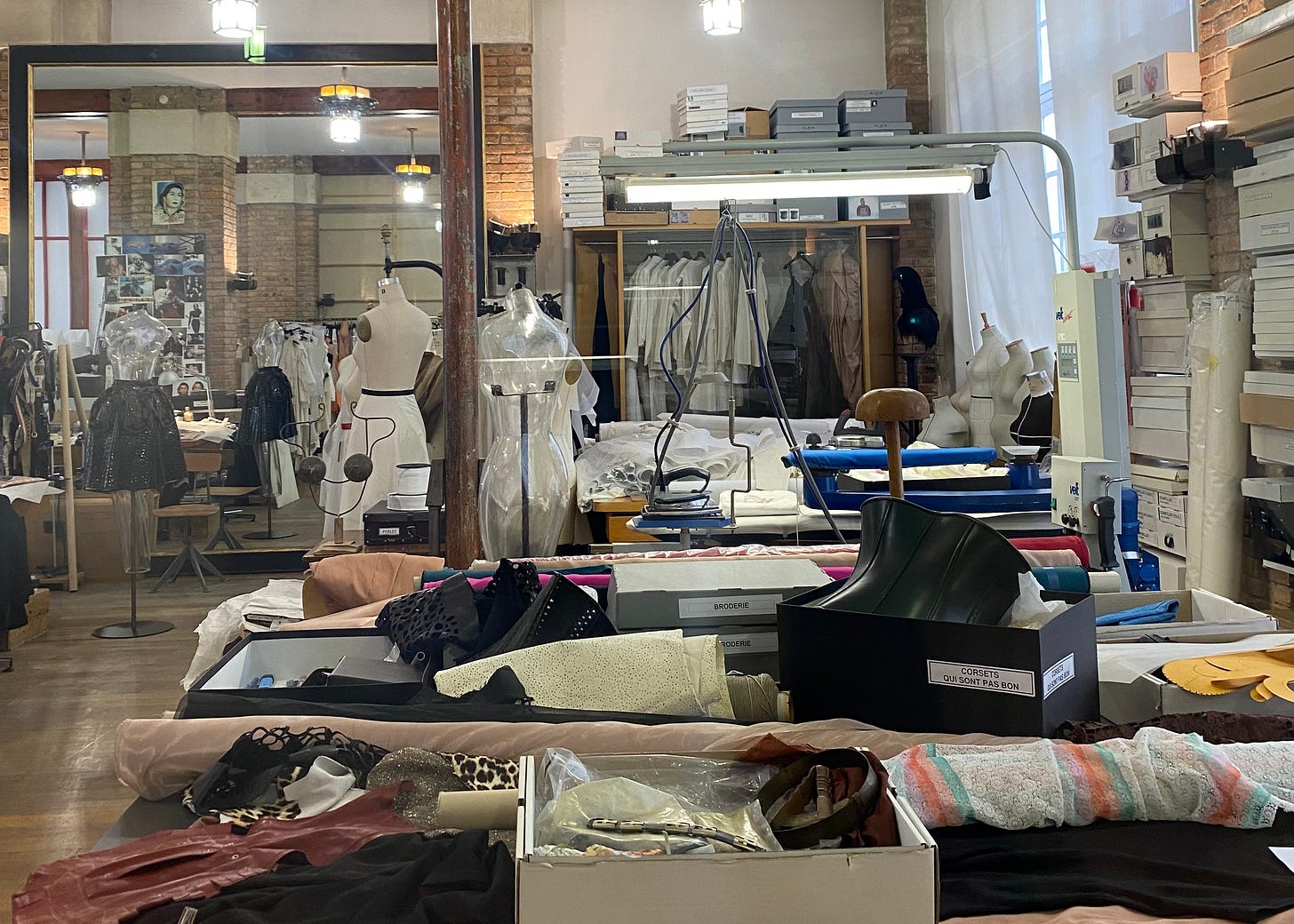
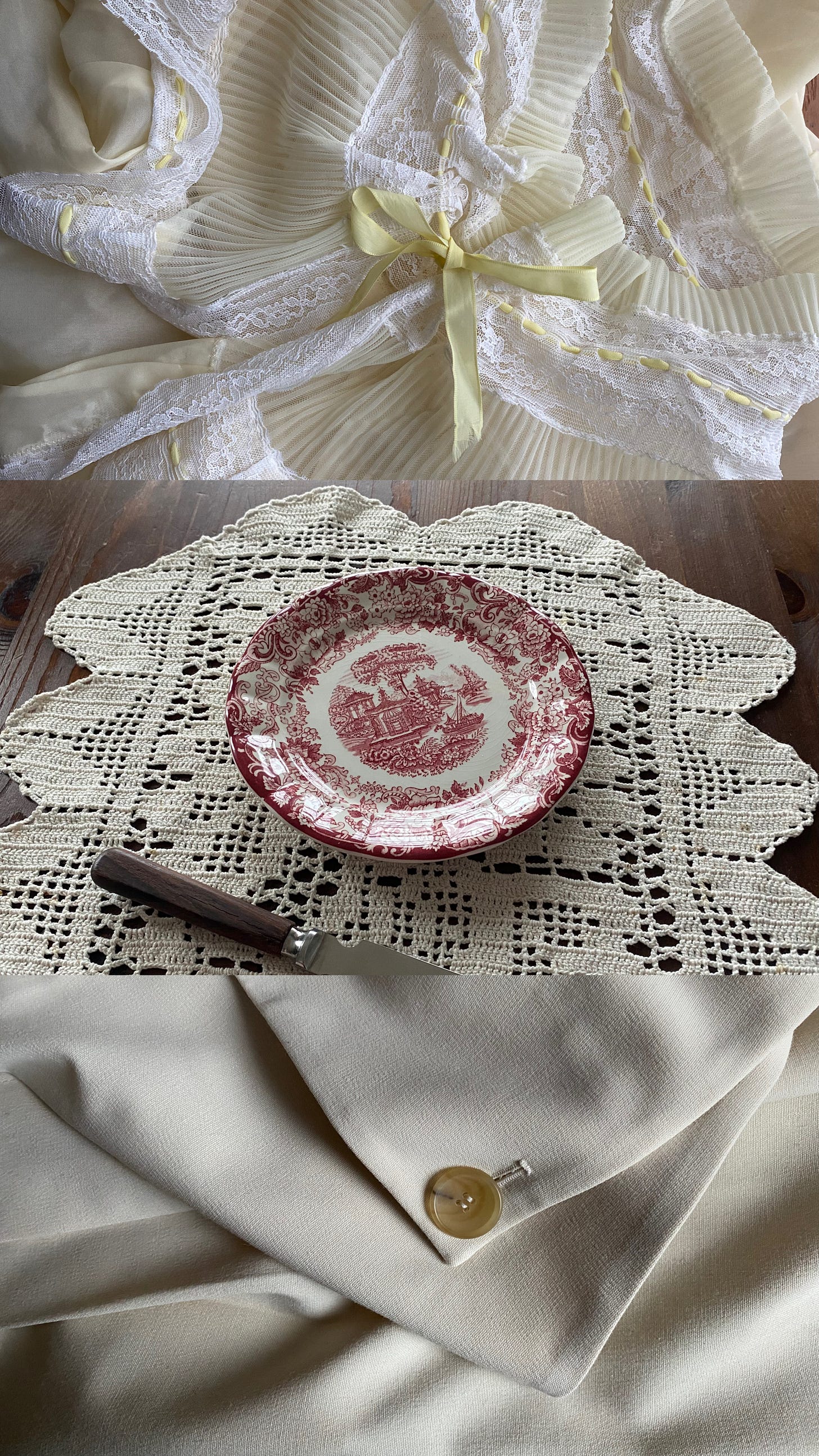


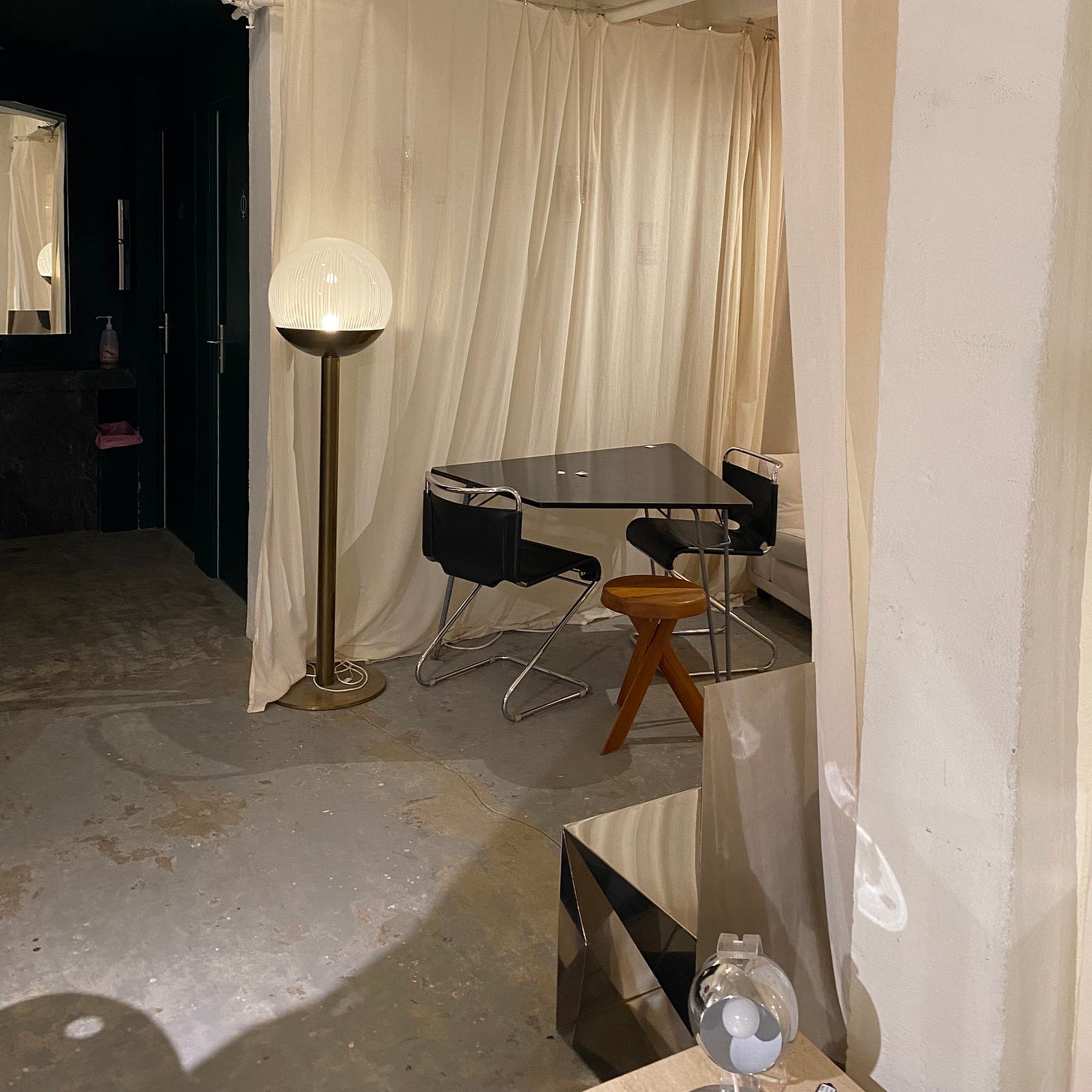
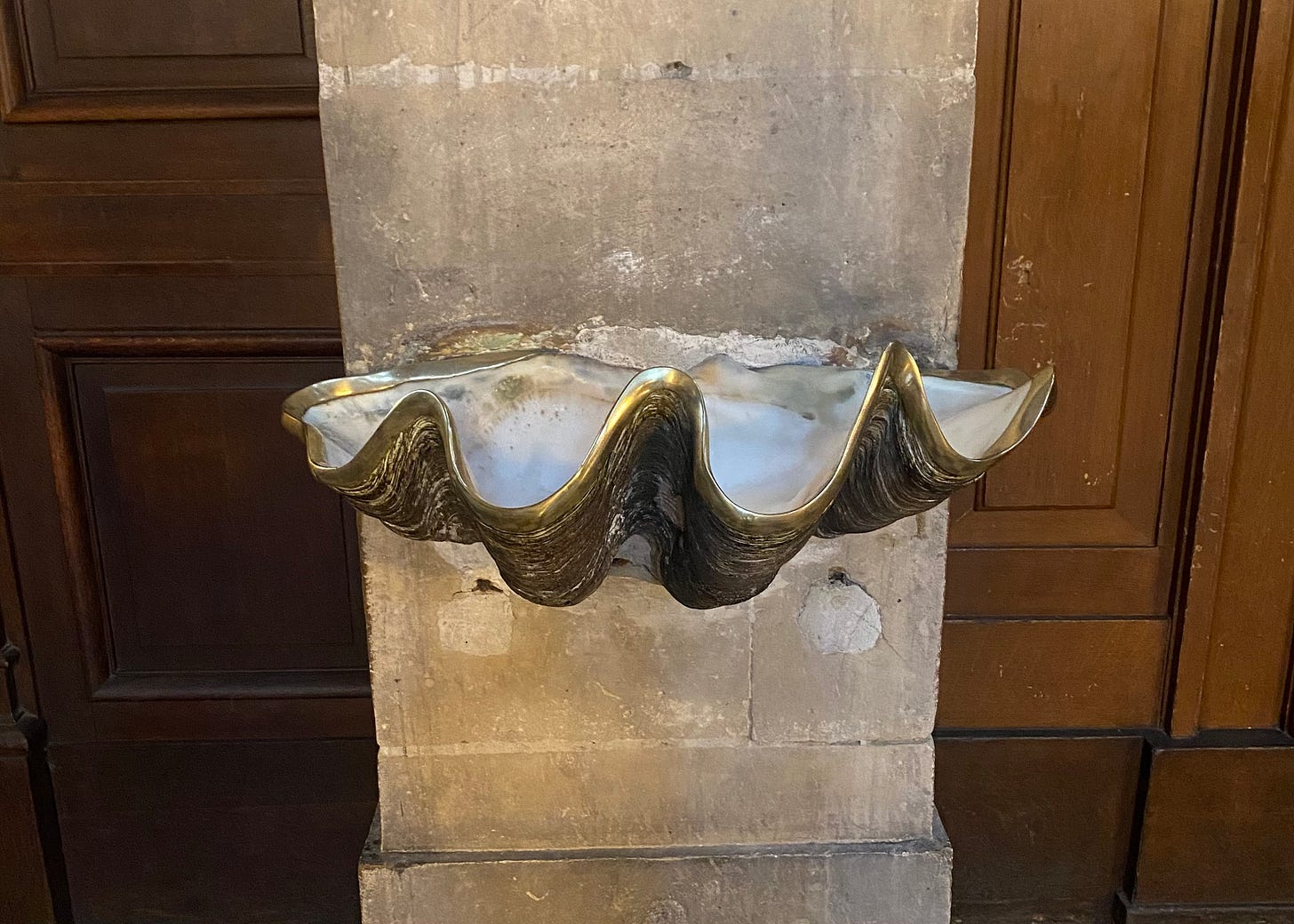
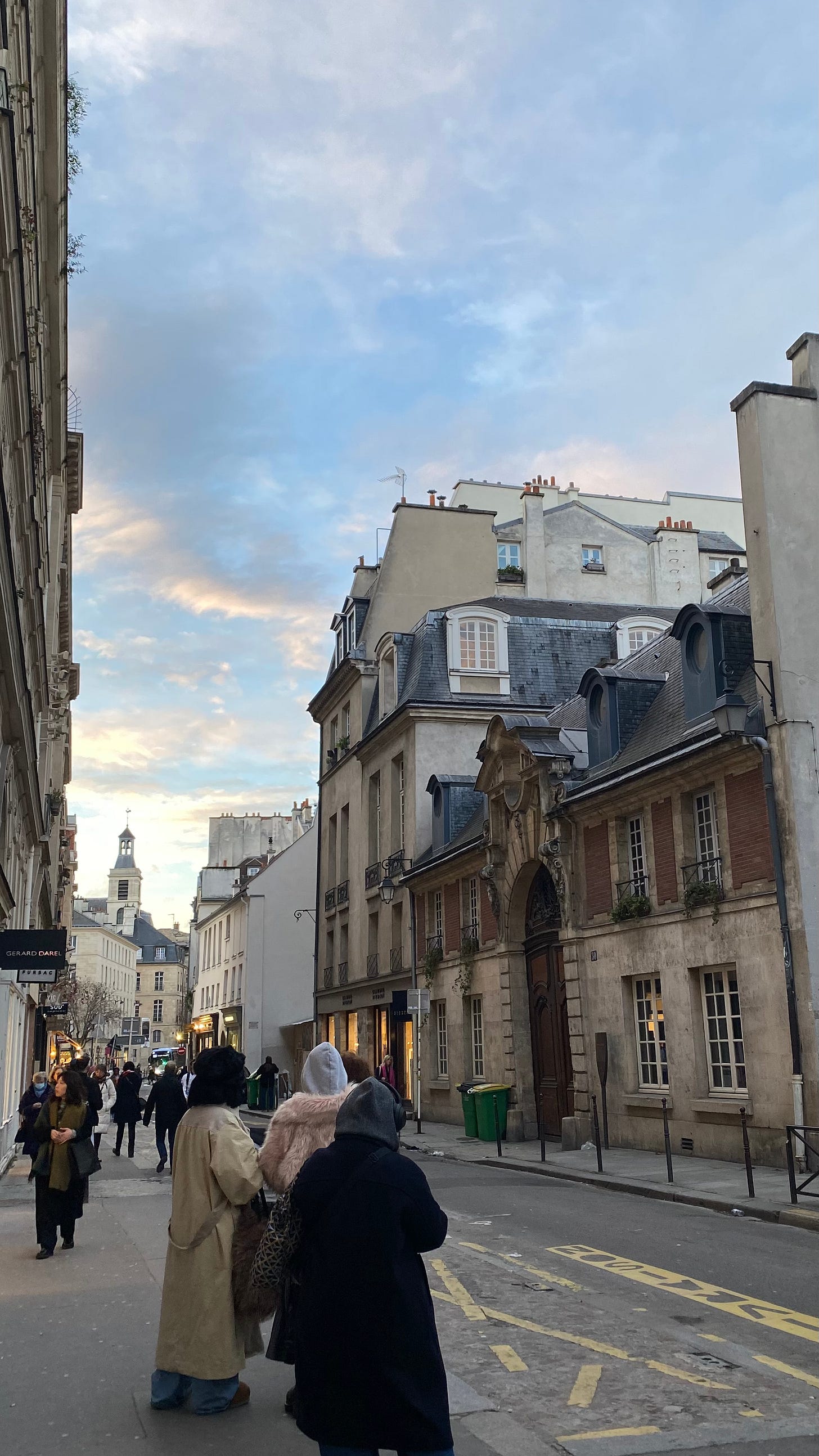

Looking lovely, proud of you 💛